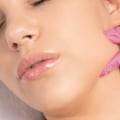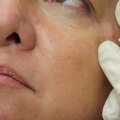Botox (Onabotulinumtoxin) is an injectable neurotoxin used to treat a variety of medical conditions, such as chronic migraines, limb spasticity, axillary hyperhidrosis, cervical dystonia, strabismus, and blepharospasm. Approved by the Food and Drug Administration (FDA) for the treatment of chronic migraines, this therapy works best for people who have headaches for at least 15 days a month. Healthcare providers inject small amounts of Botox into specific muscles to smooth wrinkles, prevent migraines, and treat a wide variety of other diseases. Botox injections temporarily paralyze muscles to reduce wrinkles, while dermal fillers add volume and help retain moisture. The results of some studies suggest that injections of BOTOX at more frequent intervals or at higher doses may lead to a higher incidence of antibody formation.
But a recent study by the University of Wisconsin-Madison has raised new questions about how Botox works in the body. In the double-blind efficacy trials for placebo-controlled chronic migraine (Study 1 and Study), the discontinuation rate was 12% in the BOTOX-treated group and 10% in the placebo-treated group. In addition, reports in the literature include a case of a female patient who developed brachial plexopathy two days after the injection of 120 units of BOTOX for the treatment of cervical dystonia, and reports of dysphonia in patients who had been treated for cervical dystonia. Adverse reactions generally occur within the first week after BOTOX injection and, although they are usually transient, can last several months or longer. The most commonly reported adverse reactions in double-blind, placebo-controlled clinical trials for overactive bladder that occurred within 12 weeks of the first Botox treatment are presented in Table 14. The most commonly reported adverse reactions following BOTOX injection for lower limb spasticity in adults are shown in Table 21. Two hundred and thirty-one patients enrolled in a double-blind, placebo-controlled study (the study received 300 units to 400 units of BOTOX) and compared with 233 patients who received placebo.
The data reflect patients whose test results were considered positive for the neutralizing activity of BOTOX in a mouse protection assay or negative based on a screening ELISA or a mouse protection assay. The data reflect 346 patients exposed to 50 units of BOTOX and 110 patients exposed to 75 units of BOTOX in each armpit. In a study of patients with blepharospasm who received an average dose per eye of 33 units (injected at 3 to 5 sites) of the currently manufactured BOTOX, the most commonly reported adverse reactions were ptosis (21%), superficial punctate keratitis (6%) and dry eye (6%).Given that Botox is widely used for cosmetic purposes as well as medical treatments, it is important to understand its potential risks and side effects. While Botox is generally considered safe when administered by a qualified healthcare professional, it is possible that it can cause health problems if not used correctly. The most common side effects include pain and bleeding at the injection site, non-axillary sweating, infection, pharyngitis, flu-like syndrome, headache, fever, neck or back pain, pruritus and anxiety.


